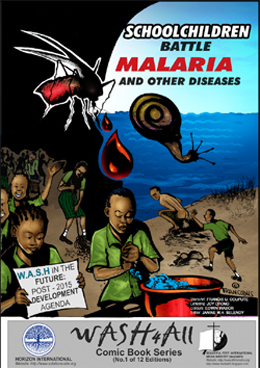Navigation
Scientists have developed a model to calculate the age of nitrogen in corn and soybean fields, which could lead to improved fertilizer application techniques to promote crop growth while reducing leaching. Nitrogen, a key nutrient for plants, can cause problems when it leaches into water supplies.
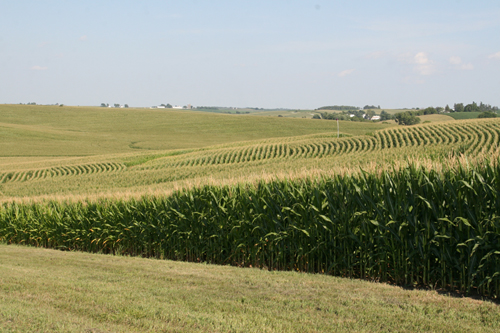 Corn fields in Iowa: Site of NSF's Intensively Managed Landscapes Critical Zone Observatory (CZO).: Photograph by Praveen Kumar courtesy of NSF.
Corn fields in Iowa: Site of NSF's Intensively Managed Landscapes Critical Zone Observatory (CZO).: Photograph by Praveen Kumar courtesy of NSF.
Horizon International co-created the Exchange alongside USAID and organizations from across government, business, academia, and NGOs who believe that together we can tackle humanity’s greatest challenges. The Exchange is providing over 300 summaries of resources from Horizon’s Solutions Site with links to the full articles and case studies and anticipates to soon have over 600 posts from the Solutions Site’s 1,500 plus resources. Explore resources on the Exchange from Horizon International at http://www.globalinnovationexchange.org/resources/organization/3013.
 Global Innovation Exchanges Launch on 23 June 2016
Global Innovation Exchanges Launch on 23 June 2016
Researchers at Lund University in Sweden have developed small, portable solar cell water purification plants. With the help of Nobel Peace Prize recipient Muhammad Yunus the purification plant stations, called Micro Production Centres (MPC), have now been placed across rural Bangladesh.
Solar cells help purify water in developing countries
[img_assist|nid=1541|title=Drinking water|desc=Courtesy of CDC|link=none|align=left|width=180|height=120]In recognition of urgent, immediate need to address devastating health problems caused by lead in drinking water in Flint, Michigan, and in other places across the United States the U.S. Environmental Protection Agency (EPA) released DWMAPS – the Drinking Water Mapping Application to Protect Source Waters on the 19th of February 2016.
 Drinking water: Courtesy of CDC
Drinking water: Courtesy of CDC
On January 16, 2016, President Obama signed an emergency declaration ordering federal assistance to support state and local response efforts in Flint, Michigan.
The U.S. Department of Health and Human Services (HHS) has been designated the lead federal agency responsible for coordinating federal government response and recovery efforts.
- California
- Castle Mountains National Monument
- E. O. Wilson
- ecosystem
- Mojave Trails National Monument
- Palau
- preservation
- President Barack Obama
- President George W. Bush
- Sand to Snow National Monument
- Biodiversity
- Desertification
- Endangered Species
- Forests
- Global Climate Change
- Oceans, Coral Reefs
- Rivers
- Water
Efforts on every scale from international to local, cooperatively and individually, are increasingly responding to this stark reality by setting aside land and regions of the seas as preservation areas which are now being protected to various extents. President Obama has taken again this past week action to invest and conserve America's natural treasures. President Barack Obama commented on the 12th of February 2016 upon designation of millions of acres in three new national monuments in the California desert to bring the land and sea he has protected to 265 million acres.
Horizon International announces Partnership with the Global Innovation Exchange, “a global online marketplace for innovations, funding, insights, resources and conversations, allowing the world to better work together to address humanity’s greatest challenges.” The Exchange is providing summaries of resources from Horizon’s Solutions Site with links to the full articles and case studies. The founding partners include the U.S. Global Development Lab at USAID and the world’s leading donors, foundations, universities, research organizations, non-governmental organizations, and news media. View a comprehensive and growing list of partners.
According a National Science Foundation (NSF), scientific literature and fisheries management and conservation efforts have for years assumed that the survival of adult fish is relatively constant through time. They further held that most fluctuations in the numbers of adults come from variation in the number of young fish that are produced and survive to maturity. Those assumptions have been challenged by new research by the National Science Foundation's Long-Term Ecological Research (LTER) Network.
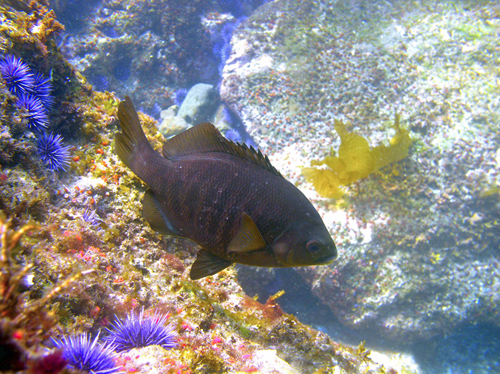 A black surfperch, subject of the study, swimming in the vicinity of Santa Cruz Island.: Photograph by Clint Nelson courtesy of NSF
A black surfperch, subject of the study, swimming in the vicinity of Santa Cruz Island.: Photograph by Clint Nelson courtesy of NSF
On October 28, 2015, Tommy E. Remengesua, Jr., President of the Republic of Palau signed into law the “Palau National Marine Sanctuary Act,” creating “the sixth largest marine protected area in the world, while setting aside a zone for domestic fishing.” According to Nature Conservancy Palau supports more than 400 species of coral species and nearly 1,300 varieties of reef fish.
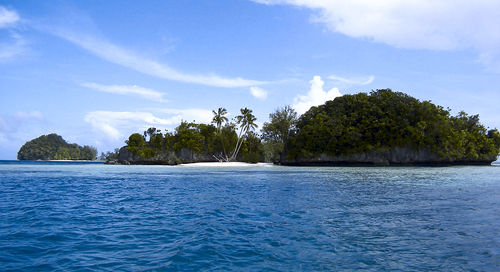 Rock Islands, Palau: Photograph by Peter R. Binter. Courtesy of Wikipedia.
Rock Islands, Palau: Photograph by Peter R. Binter. Courtesy of Wikipedia.
On October 28, 2015, Tommy E. Remengesua, Jr., President of the Republic of Palau signed into law the “Palau National Marine Sanctuary Act,” creating “the sixth largest marine protected area in the world, while setting aside a zone for domestic fishing.”
Scientists are studying coral reefs in areas where low pH is naturally occurring to answer questions about ocean acidification, which threatens coral reef ecosystems worldwide. A new study led by scientists at the Woods Hole Oceanographic Institution (WHOI) found that coral reefs in Palau seem to be defying the odds, showing none of the predicted responses to low pH except for an increase in bio-erosion--the physical breakdown of coral skeletons by boring organisms such as mollusks and worms.
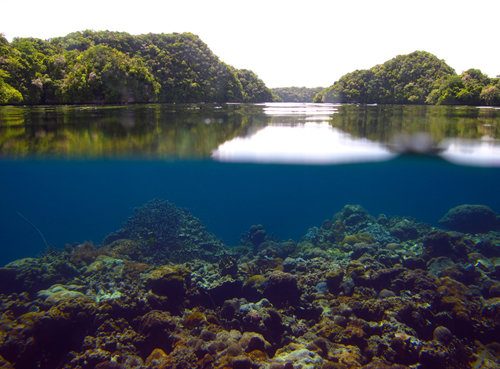
As the ocean absorbs atmospheric carbon dioxide (CO2) released by the burning of fossil fuels, its chemistry is changing. The CO2 reacts with water molecules, lowering ocean pH (making it more acidic) in a process known as ocean acidification.
Rajendra Singh of India is named the 2015 Stockholm Water Prize Laureate, for his innovative water restoration efforts, improving water security in rural India, and for showing extraordinary courage and determination in his quest to improve the living conditions for those most in need.
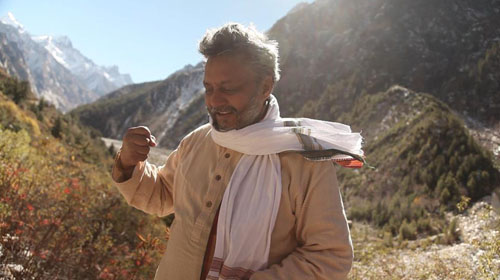 Rajendra Singh, 2015 Stockholm Water Prize Laureate: Photograph courtesy of SIWI
Rajendra Singh, 2015 Stockholm Water Prize Laureate: Photograph courtesy of SIWI
Rajendra Singh of India is named the 2015 Stockholm Water Prize Laureate, for his innovative water restoration efforts, improving water security in rural India, and for showing extraordinary courage and determination in his quest to improve the living conditions for those most in need.
U.K. government establishes world’s largest fully protected marine reserve and sets a new standard for monitoring. The 834,334-square-kilometre reserve (322,138 square miles) is home to at least 1,249 species of marine mammals, seabirds and fish, the new reserve protects some of the most near-pristine ocean habitat on Earth.
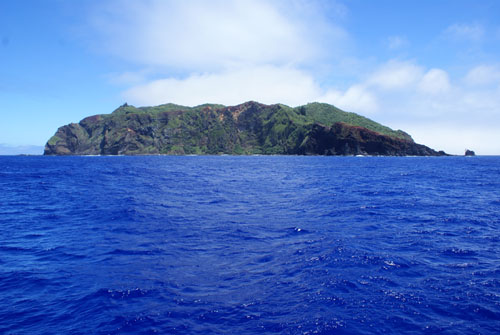 Pitcairn is the only inhabited island in the chain, with a population of just over 50 people.: The majority are descendants of the mutineers of the British Royal Navy’s HMS Bounty, who settled Pitcairn with Tahitian companions in 1790. Photograph by Andrew Christian
Pitcairn is the only inhabited island in the chain, with a population of just over 50 people.: The majority are descendants of the mutineers of the British Royal Navy’s HMS Bounty, who settled Pitcairn with Tahitian companions in 1790. Photograph by Andrew Christian
U.K. government establishes world’s largest fully protected marine reserve and sets a new standard for monitoring.
Sharks are safer in the Pacific Ocean, thanks to Micronesia's establishment of the world's second-largest shark sanctuary. The protected area, equal in size to India, will help strengthen the marine ecosystem and economy.
.jpg) Scalloped hammerhead sharks are found along the coastlines in warm, temperate waters of the Atlantic, Pacific and Indian oceans: and are assessed by the International Union for Conservation of Nature, in its Red List of Threatened Species, as Endangered worldwide. Photograph Credit: C & M Fallows/OceanwideImages.com
Scalloped hammerhead sharks are found along the coastlines in warm, temperate waters of the Atlantic, Pacific and Indian oceans: and are assessed by the International Union for Conservation of Nature, in its Red List of Threatened Species, as Endangered worldwide. Photograph Credit: C & M Fallows/OceanwideImages.com
"Scientists and policymakers will use SMAP data to track water movement around our planet and make more informed decisions in critical areas like agriculture and water resources," said NASA Administrator Charles Bolden. SMAP also will detect whether the ground is frozen or thawed. Detecting variations in the timing of spring thaw and changes in the length of the growing season will help scientists more accurately account for how much carbon plants are removing from Earth's atmosphere each year.
- biodiversity
- carbon dioxide
- Climate change
- http://www.nasa.gov/earthrightnow
- http://www.nasa.gov/smap
- NASA
- NASA satellite
- soil moisture
- Soil Moisture Active Passive (SMAP)
- Water in Earth’s Soil
- water resource management
- Desertification
- Global Climate Change
- News and Special Reports
- Oceans, Coral Reefs
- Rivers
- Water
A new NASA satellite that will peer into the topmost layer of Earth's soils to measure the hidden waters that influence our weather and climate is in final preparations for a January 29, 2015 dawn launch from California. The Soil Moisture Active Passive (SMAP) mission will take the pulse of a key measure of our water planet: how freshwater cycles over Earth's land surfaces in the form of soil moisture. This data will be used to enhance scientists' understanding of the processes that link Earth's water, energy and carbon cycles.
NASA | Building the Nation's Newest Weather Satellite
- Artemisinin-based combination therapies (ACTs)
- Director-General WHO
- Dr Margaret Chan
- Ebola-affected countries
- insecticide treated net
- malaria
- malaria interventions
- malaria transmission
- Roll Back Malaria Partnership
- WHO
- WHO African Region
- WHO Malaria Fact Sheet
- World Health Organization
- World malaria report 2014
- Global Climate Change
- Global Health
- News and Special Reports
- Public Health
The number of people dying from malaria has fallen dramatically since 2000 and malaria cases are also steadily declining, according to the “World malaria report 2014.” Between 2000 and 2013, the malaria mortality rate decreased by 47% worldwide and by 54% in the WHO African Region - where about 90% of malaria deaths occur.
WHO: Key facts about Malaria (updated)
National competition launched to stimulate development of a new tool to digitally record images and data from museum insect collections. Other than the team leader, team members are not required to be U.S. Citizens or to reside in the United States.
 Competition for new tool to digitally capture images and data from museum insect collections is open.: Photograph courtesy of the American Institute of Biological Sciences
Competition for new tool to digitally capture images and data from museum insect collections is open.: Photograph courtesy of the American Institute of Biological Sciences
Tufts University's first Massive Open Online Course (MOOC), The Biology of Water and Health (Part 1), is currently available for registration on the edX platform: http://tinyurl.com/tuftswatermooc. The course starts on November 4, 2014. Taught by Tufts professors Jeffrey K. Griffiths, Public Health and Community Medicine and David M. Gute, Civil and Environmental Engineering, this course is a uniquely interdisciplinary approach to critical water and water-related health challenges across the globe.
Tufts University's first Massive Open Online Course (MOOC), The Biology of Water and Health (Part 1), is currently available for registration on the edX platform: http://tinyurl.com/tuftswatermooc. The course starts on November 4, 2014.
- Architect Edwin Irabor
- Beautiful Feet International
- Bfi
- BFI Kreative Brainz Klub
- CARTOON AFRICA INTERNATIONAL BIENNIAL
- cartoons
- Centers for Disease Control and Prevention (CDC)
- Diarrhea
- Francis Odupute
- free comic book
- Global Development And Environment Institute
- Interventions and Preventive Measures
- Janine M. H. Selendy
- Jay Graham
- Joy Otono
- malaria
- Nigeria
- sanitation and hygiene for all
- Schoolchildren Battle Malaria and Other Diseases
- SIWI
- Sophia C. Odupute
- water
- Water and Sanitation Related Diseases and the Environment: Challenges
- water-related diseases
- Wiley-Blackwell
- World Bank
- World Health Organization
- WSSCC
- Global Health
- Public Health
- Sanitation
- Water
- Water and Sanitation
The publication of “Schoolchildren Battle Malaria and Other Diseases,” the first edition of “WASH 4 All,” a comic book series being offered for free throughout the world announced was today by Horizon International and MediaBFI. “WASH 4 ALL” (water, sanitation and hygiene for all) comic book series and short animated cartoon videos are being produced by Horizon International, an NGO based at Yale University, in collaboration with Beautiful Feet International (MediaBFI), a non-profit organization based in Nigeria.
The efforts of the Clean Annapolis River Project lead to preservation of the Annapolis River and its watershed in Nova Scotia, Canada, and its designation as a UNESCO Biosphere Reserve.
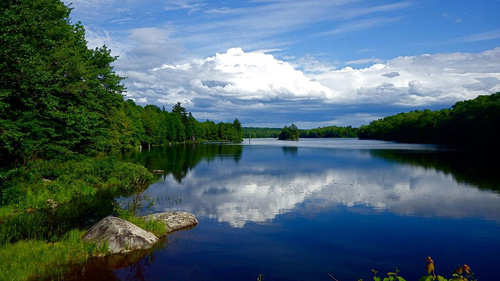 Grand Lake, Annapolis County, Nova Scotia.: Photograph by Katie McLean for the Clean Annapolis River Project
Grand Lake, Annapolis County, Nova Scotia.: Photograph by Katie McLean for the Clean Annapolis River Project
- Caribbean coral reefs
- Carl Gustaf Lundin
- Climate change
- coral bleaching
- Global Coral Reef Monitoring Network (GCRMN)
- grazers
- International Union for the Conservation of Nature (IUCN)
- IUCN’s Global Marine and Polar Programme
- local stressors
- parrotfish
- sea urchin
- Sylvia Earle
- United Nations Environmental Programme (UNEP)
- Biodiversity
- Global Climate Change
- Oceans, Coral Reefs
“The rate at which the Caribbean corals have been declining is truly alarming…They are a major oceanic ecosystem, this is a tragedy that must be reversed,” says Carl Gustaf Lundin, Director of IUCN’s Global Marine and Polar Programme. But the study, Status and Trends of Caribbean Coral Reefs: 1970-2012, “brings some very encouraging news: the fate of Caribbean corals is not beyond our control and there are some very concrete steps that we can take to help them recover.”
 Shutterstock.com_edited-2.jpg) Rare sighting today Large rainbow parrotfish grazing in the Caribbean: Photograph courtesy of and (c) Shutterstock.com
Rare sighting today Large rainbow parrotfish grazing in the Caribbean: Photograph courtesy of and (c) Shutterstock.com
Search
Latest articles
Agriculture
- World Water Week: Healthy ecosystems essential to human health: from coronavirus to malnutrition Online session Wednesday 24 August 17:00-18:20
- World Water Week: Healthy ecosystems essential to human health: from coronavirus to malnutrition Online session Wednesday 24 August 17:00-18:20
Air Pollution
- "Water and Sanitation-Related Diseases and the Changing Environment: Challenges, Interventions, and Preventive Measures" Volume 2 Is Now Available
- Global Innovation Exchange Co-Created by Horizon International, USAID, Bill and Melinda Gates Foundation and Others
Biodiversity
- World Water Week: Healthy ecosystems essential to human health: from coronavirus to malnutrition Online session Wednesday 24 August 17:00-18:20
- Mangrove Action Project Collaborates to Restore and Preserve Mangrove Ecosystems
Desertification
- World Water Week: Healthy ecosystems essential to human health: from coronavirus to malnutrition Online session Wednesday 24 August 17:00-18:20
- UN Food Systems Summit Receives Over 1,200 Ideas to Help Meet Sustainable Development Goals
Endangered Species
- Mangrove Action Project Collaborates to Restore and Preserve Mangrove Ecosystems
- Coral Research in Palau offers a “Glimmer of Hope”
Energy
- Global Innovation Exchange Co-Created by Horizon International, USAID, Bill and Melinda Gates Foundation and Others
- Wildlife Preservation in Southeast Nova Scotia
Exhibits
- Global Innovation Exchange Co-Created by Horizon International, USAID, Bill and Melinda Gates Foundation and Others
- Coral Reefs
Forests
- NASA Satellites Reveal Major Shifts in Global Freshwater Updated June 2020
- Global Innovation Exchange Co-Created by Horizon International, USAID, Bill and Melinda Gates Foundation and Others
Global Climate Change
- World Water Week: Healthy ecosystems essential to human health: from coronavirus to malnutrition Online session Wednesday 24 August 17:00-18:20
- Mangrove Action Project Collaborates to Restore and Preserve Mangrove Ecosystems
Global Health
- World Water Week: Healthy ecosystems essential to human health: from coronavirus to malnutrition Online session Wednesday 24 August 17:00-18:20
- More than 400 schoolgirls, family and teachers rescued from Afghanistan by small coalition
Industry
- "Water and Sanitation-Related Diseases and the Changing Environment: Challenges, Interventions, and Preventive Measures" Volume 2 Is Now Available
- Global Innovation Exchange Co-Created by Horizon International, USAID, Bill and Melinda Gates Foundation and Others
Natural Disaster Relief
- STOP ATTACKS ON HEALTH CARE IN UKRAINE
- Global Innovation Exchange Co-Created by Horizon International, USAID, Bill and Melinda Gates Foundation and Others
News and Special Reports
- World Water Week: Healthy ecosystems essential to human health: from coronavirus to malnutrition Online session Wednesday 24 August 17:00-18:20
- STOP ATTACKS ON HEALTH CARE IN UKRAINE
Oceans, Coral Reefs
- World Water Week: Healthy ecosystems essential to human health: from coronavirus to malnutrition Online session Wednesday 24 August 17:00-18:20
- Mangrove Action Project Collaborates to Restore and Preserve Mangrove Ecosystems
Pollution
- Zakaria Ouedraogo of Burkina Faso Produces Film “Nzoue Fiyen: Water Not Drinkable”
- "Water and Sanitation-Related Diseases and the Changing Environment: Challenges, Interventions, and Preventive Measures" Volume 2 Is Now Available
Population
- "Water and Sanitation-Related Diseases and the Changing Environment: Challenges, Interventions, and Preventive Measures" Volume 2 Is Now Available
- "Water and Sanitation-Related Diseases and the Changing Environment: Challenges, Interventions, and Preventive Measures" Volume 2 Is Now Available
Public Health
- Honouring the visionary behind India’s sanitation revolution
- Honouring the visionary behind India’s sanitation revolution
Rivers
- World Water Week: Healthy ecosystems essential to human health: from coronavirus to malnutrition Online session Wednesday 24 August 17:00-18:20
- Mangrove Action Project Collaborates to Restore and Preserve Mangrove Ecosystems
Sanitation
- Honouring the visionary behind India’s sanitation revolution
- Honouring the visionary behind India’s sanitation revolution
Toxic Chemicals
- "Water and Sanitation-Related Diseases and the Changing Environment: Challenges, Interventions, and Preventive Measures" Volume 2 Is Now Available
- Actions to Prevent Polluted Drinking Water in the United States
Transportation
- "Water and Sanitation-Related Diseases and the Changing Environment: Challenges, Interventions, and Preventive Measures" Volume 2 Is Now Available
- Urbanization Provides Opportunities for Transition to a Green Economy, Says New Report
Waste Management
- Honouring the visionary behind India’s sanitation revolution
- Honouring the visionary behind India’s sanitation revolution
Water
- Honouring the visionary behind India’s sanitation revolution
- Honouring the visionary behind India’s sanitation revolution
Water and Sanitation
- Honouring the visionary behind India’s sanitation revolution
- Honouring the visionary behind India’s sanitation revolution


